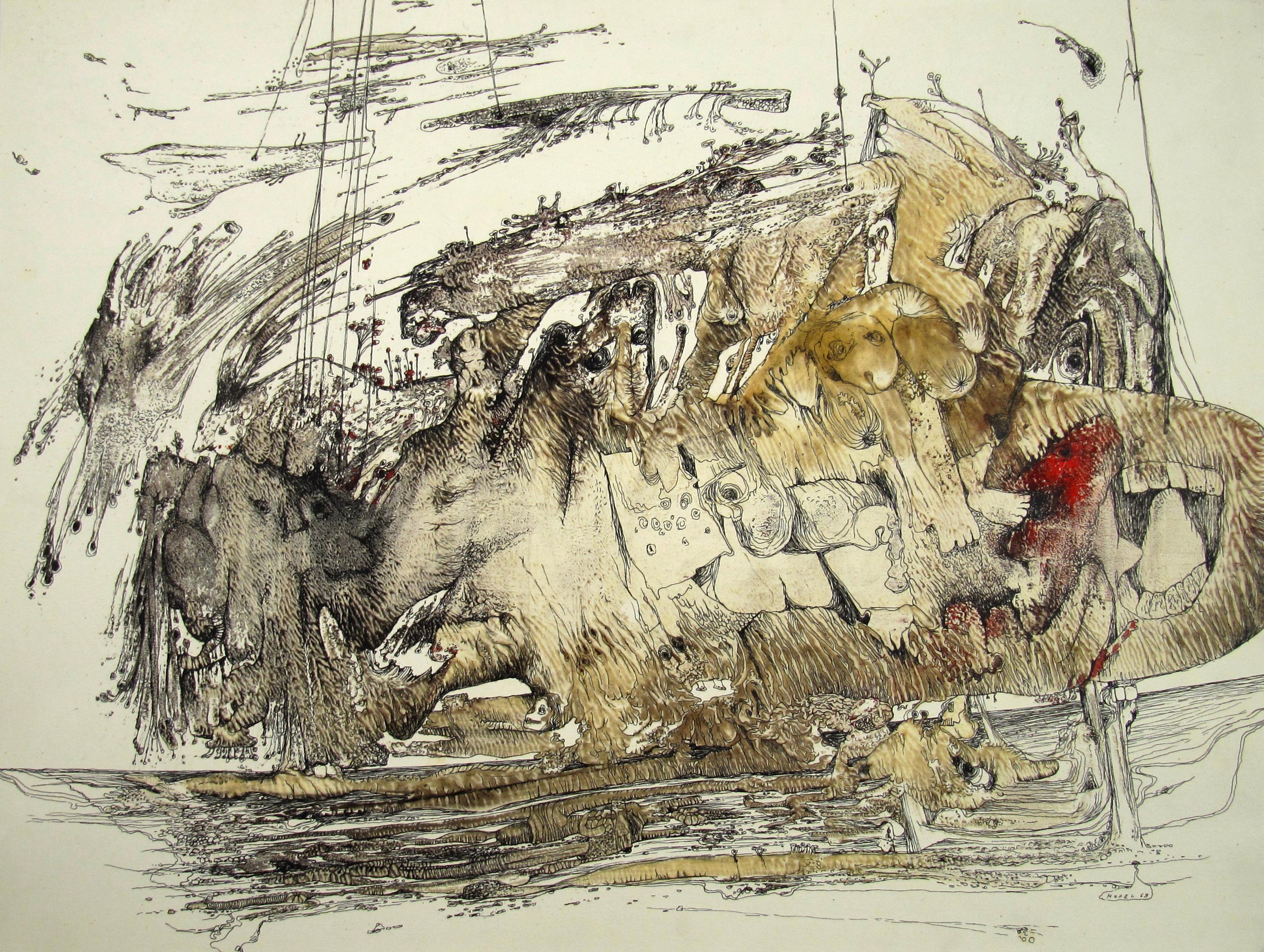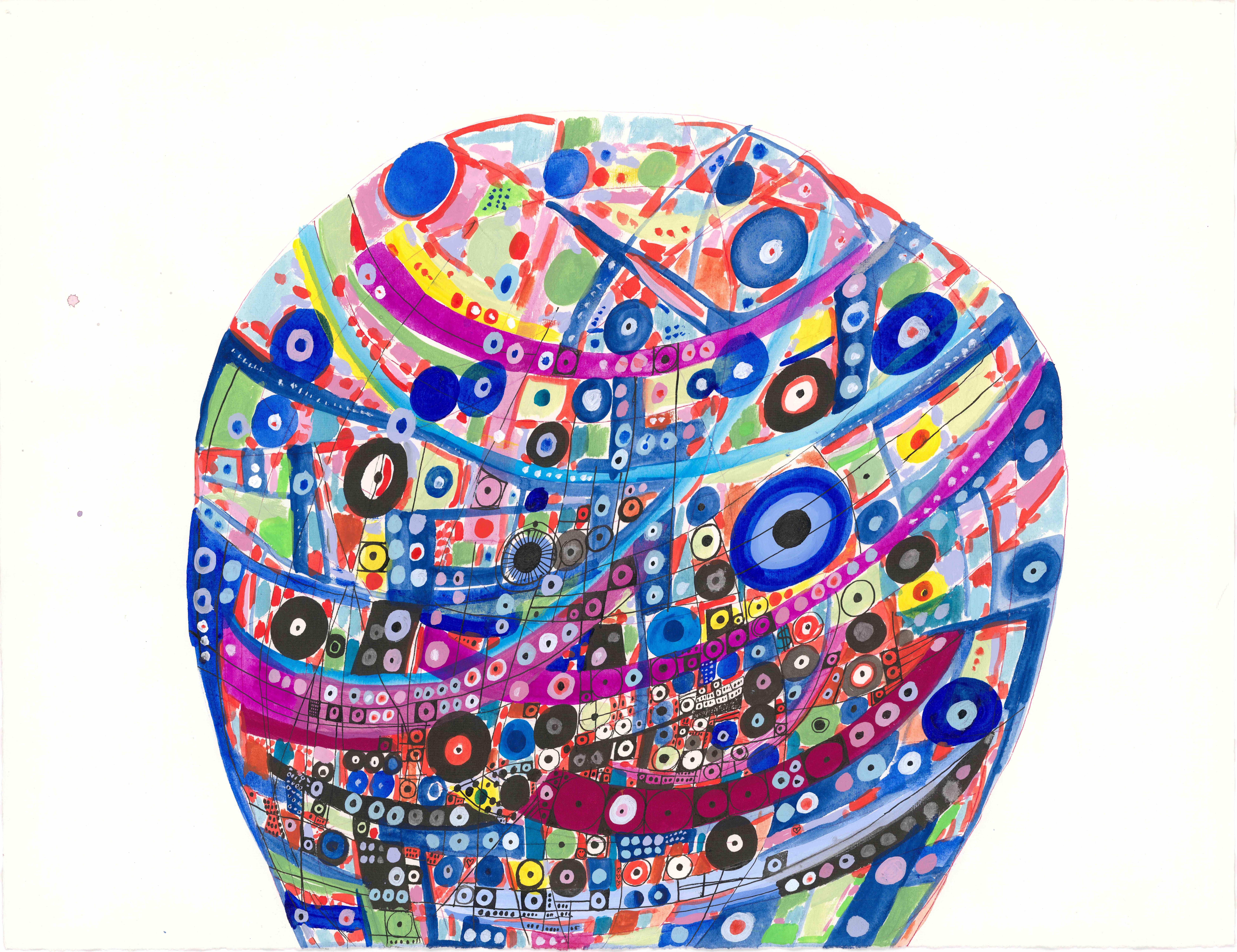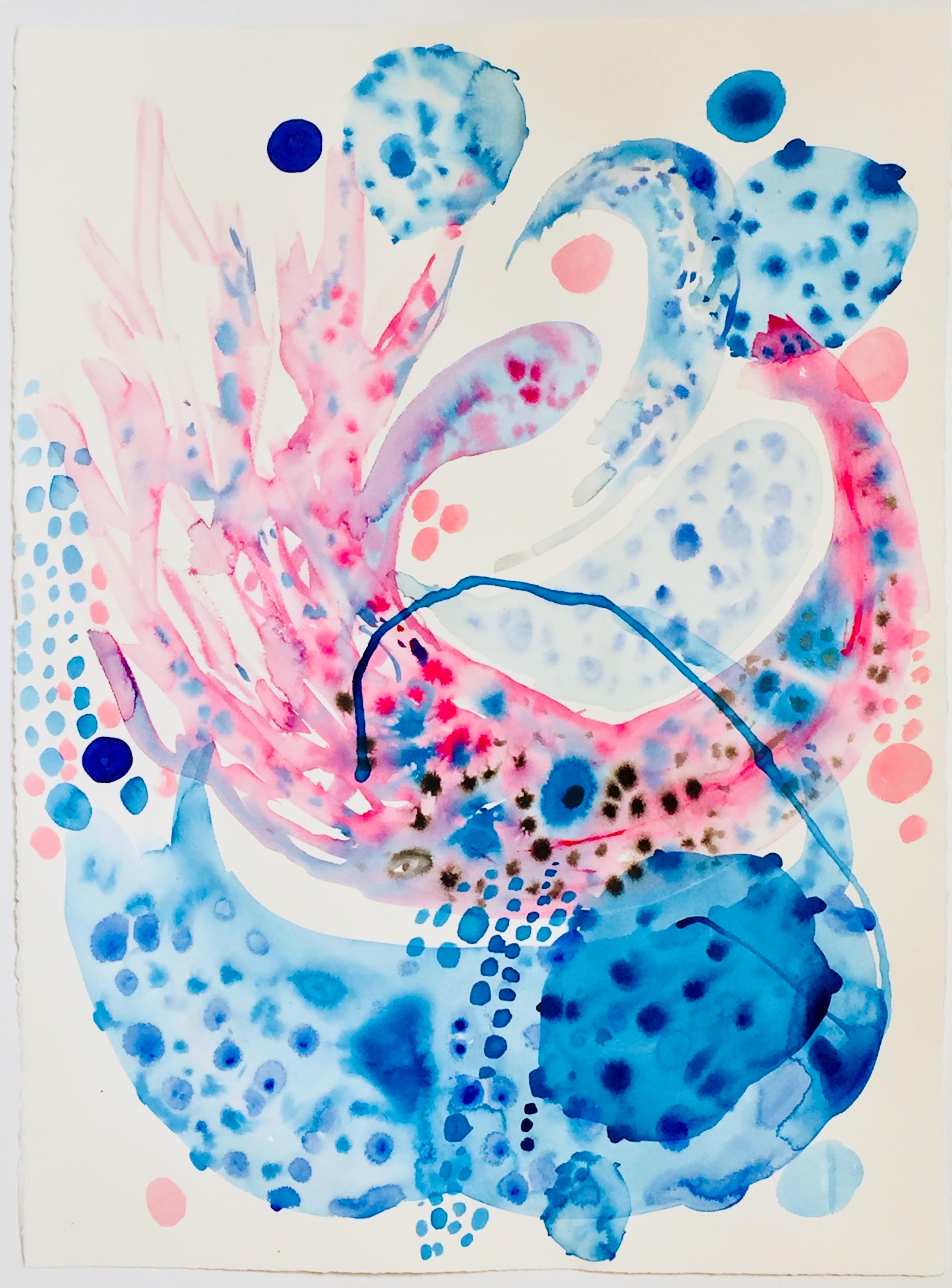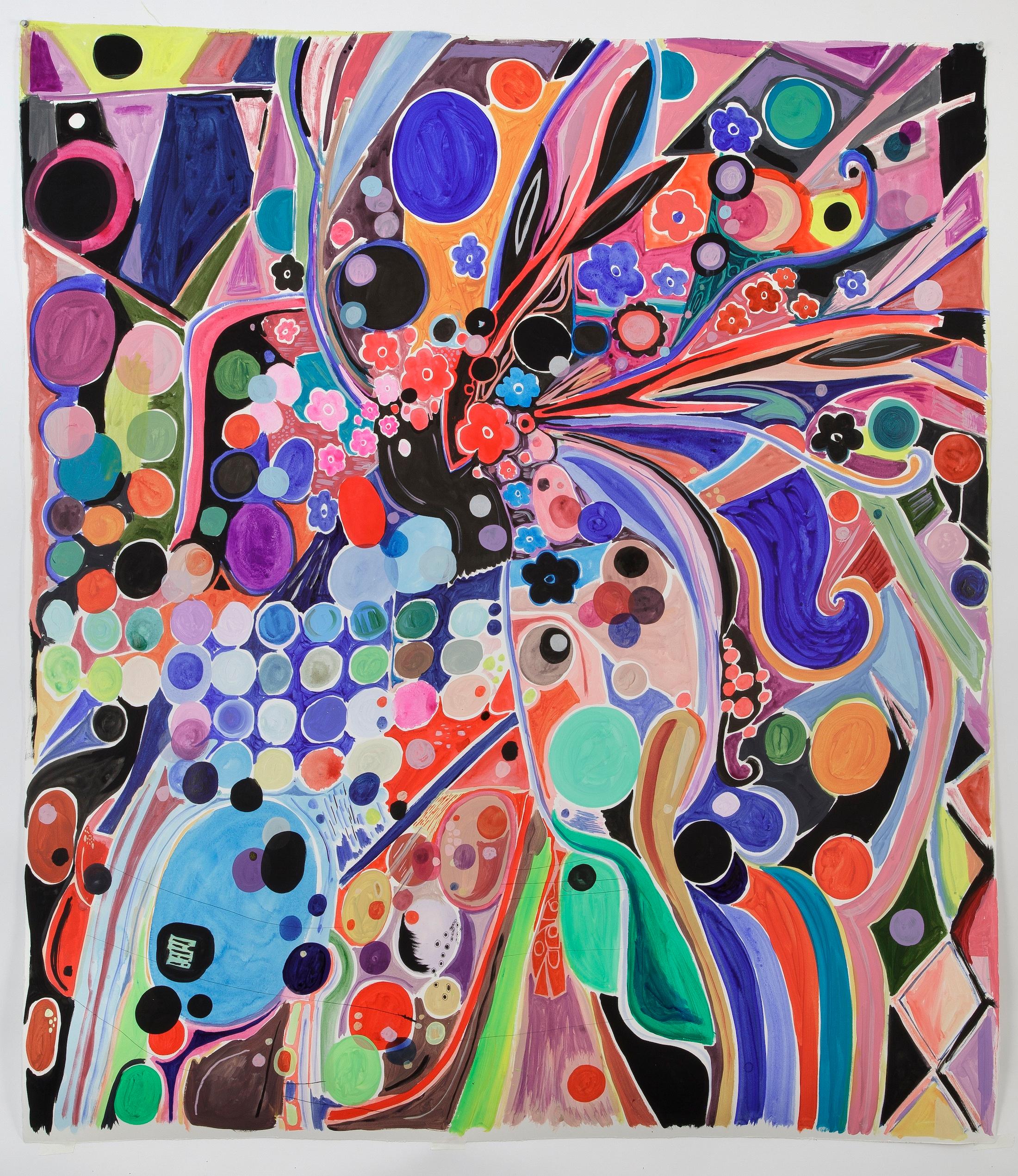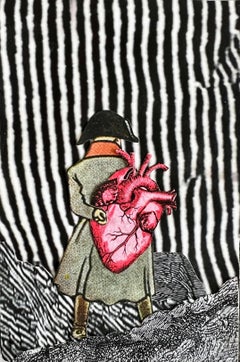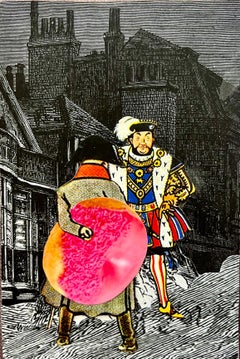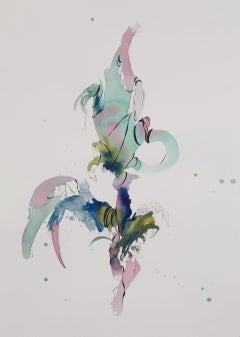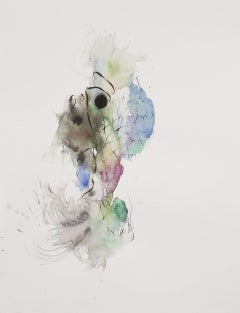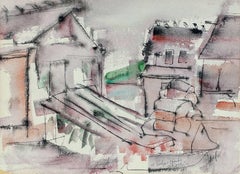
WPA Woman Artist Modernist Abstract Watercolor of Houses
View Similar Items
Want more images or videos?
Request additional images or videos from the seller
1 of 3
Riva HelfondWPA Woman Artist Modernist Abstract Watercolor of Houses
About the Item
- Creator:Riva Helfond (1910-2002, American)
- Dimensions:Height: 175 in (444.5 cm)Width: 21.75 in (55.25 cm)
- Medium:
- Period:
- Condition:minor wear to frame commensurate with age and use.
- Gallery Location:Surfside, FL
- Reference Number:1stDibs: LU3822063513
About the Seller
4.9
Platinum Seller
These expertly vetted sellers are 1stDibs' most experienced sellers and are rated highest by our customers.
Established in 1995
1stDibs seller since 2014
1,541 sales on 1stDibs
Typical response time: 1 hour
More From This SellerView All
- Collage Watercolor Painting David Gilhooly California Funk Surrealism MixedMediaBy David GilhoolyLocated in Surfside, FLDAVID JAMES GILHOOLY (American, 1943-2013), Mixed media collage 6 x 4 inches, Hand signed and dated verso Napoleon from the back, holding a heart. cut and pasted cardstock assemblage, collaged art. David Gilhooly RCA (1943 – 2013), was an American ceramicist, sculptor, painter, printmaker, and professor. He is best known for pioneering the Funk art movement. He made a series of ceramic frogs called FrogWorld, as well as ceramic food, planets, and other creatures. David James Gilhooly III was born on April 15, 1943, in Auburn, California. He was raised in Los Altos, California; Saint Croix in the Virgin Islands; and Humacao, Puerto Rico. He enrolled in University of California, Davis (UC Davis) initially studying biology, followed by anthropology, and ending with a focus on fine art. While attending UC Davis, Gilhooly served as artist Robert Arneson assistant starting in 1963. He graduated from UC Davis with a BA degree in 1965, and an MA degree in 1967. Gilhooly, together with Robert Arneson, Peter Vandenberge, Chris Unterseher, and Margaret Dodd, working together in TB-9 (temporary building 9) were what was later to be called, The Funk Ceramic...Category
2010s Surrealist Mixed Media
MaterialsPaper, Ink, Watercolor
- Collage Watercolor Painting David Gilhooly California Funk Surrealism MixedMediaBy David GilhoolyLocated in Surfside, FLDAVID JAMES GILHOOLY (American, 1943-2013), Mixed media collage 6 x 4 inches, Hand signed and dated verso Napoleon from the back, with King Henry VIII holding a pastry. titled: "England cannot be conquered by a few French pastries" cut and pasted cardstock assemblage, collaged art. David Gilhooly RCA (1943 – 2013), was an American ceramicist, sculptor, painter, printmaker, and professor. He is best known for pioneering the Funk art movement. He made a series of ceramic frogs called FrogWorld, as well as ceramic food, planets, and other creatures. David James Gilhooly III was born on April 15, 1943, in Auburn, California. He was raised in Los Altos, California; Saint Croix in the Virgin Islands; and Humacao, Puerto Rico. He enrolled in University of California, Davis (UC Davis) initially studying biology, followed by anthropology, and ending with a focus on fine art. While attending UC Davis, Gilhooly served as artist Robert Arneson assistant starting in 1963. He graduated from UC Davis with a BA degree in 1965, and an MA degree in 1967. Gilhooly, together with Robert Arneson, Peter Vandenberge, Chris Unterseher, and Margaret Dodd, working together in TB-9 (temporary building 9) were what was later to be called, The Funk Ceramic...Category
2010s Surrealist Mixed Media
MaterialsPaper, Ink, Watercolor
- WPA Woman Artist Modernist Abstract Watercolor of HousesBy Riva HelfondLocated in Surfside, FLGenre: Modern Subject: Abstract Medium: Watercolor Surface: Paper Country: United States Dimensions w/Frame: 17 1/2" x 21 3/4" Riva Helfond (1910–2002) was an American artist and printmaker best known for her social realist studies of working people's lives. Riva Helfond was born in Brooklyn, New York, to a Jewish family. She spent some of her childhood in Russia and returned to New York at the age of eleven, living in New York or New Jersey for most of the rest of her life. Between 1928 and 1940, she studied at the School of Industrial Art and the Art Students League; her teachers included William von Schlegell, Yasuo Kuniyoshi, and Morris Kantor for painting and Harry Sternberg for printmaking. Among her fellow students were Alexander Brook and her future husband, the sculptor William (Bill) Barrett. Helfond began teaching in the College Art Association Program (1933–36) and then taught printmaking at the Harlem Arts Community Center (1936–38). Initially she taught lithography alongside Jacob Lawrence, Romare Bearden, and others before moving to the graphic arts division, where she worked with Louis Lozowick and Jacob Kainen, and the silkscreen division, which was supervised by Anthony Velonis and which had Harry Gottlieb and Elizabeth Olds...Category
Mid-20th Century Abstract Drawings and Watercolors
MaterialsPaper, Ink, Watercolor
- Veiled Series L, Abstract Expressionist Organic Drawing Watercolor PaintingBy Dorothy GillespieLocated in Surfside, FLDorothy Gillespie (June 29, 1920 – September 30, 2012) was an American artist and sculptor who became known for her large and colorful abstract metal sculptures. Gillespie became best known for the aluminum sculptures she started to produce at the end of the 1970s. She would paint sheets of the metal, cut them into strips and connect the strips together to resemble cascades or starbursts of bright colored ribbon. The New York Times once summarized her work as “topsy-turvy, merrymaking fantasy,” and in another review declared, “The artist’s exuberant sculptures of colorful aluminum strips have earned her an international reputation.Her works are featured at her alma mater (Radford University) in Virginia, where she later returned to teach, as well as in New York (where she was artist in residence for the feminist Women's Interart Center), Wilmington, North Carolina and Florida. She enrolled both at Radford University near her hometown, and the Maryland Institute College of Art in Baltimore, Maryland. The director of the Maryland Institute, Hans Schuler, helped foster her career in fine art. On June 5, 1943, aged 23, Gillespie moved to New York City. There she took a job at the B. Altman department store as assistant art director. She also joined the Art Students League where she was exposed to new ideas about techniques, materials, and marketing. She also created works at Atelier 17 printmaking studio, where Stanley William Hayter encouraged to experiment with her own ideas. She and her husband, Bernard Israel, opened a restaurant and night club in Greenwich Village to support their family. She returned to making art in 1957, and worked at art full-time after they sold the nightclub in the 1970. In 1977 Gillespie gave her first lecture series at the New School for Social Research, and she would give others there until 1982. She taught at her alma mater as a Visiting Artist (1981-1983) and gave Radford University some of her work to begin its permanent art collection. Gillespie then served as Woodrow Wilson visiting Fellow (1985-1994), visiting many small private colleges to give public lectures and teach young artists. She returned to Radnor University to teach as Distinguished Professor of Art (1997–99).[8] She also hosted a radio program, the Dorothy Gillespie Show on Radio Station WHBI in New York from 1967-1973. Gillespie began moving away from realism and into the abstraction that marked her career. Gillespie returned to New York City in 1963 to continue her career. She maintained a studio through the 70s and advocate worked towards feminist goals in the art industry, picketing the Whitney Museum, helping to organize the Women's Interart Center, curating exhibitions of women's art, and writing articles raising awareness of her cause. Gillespie numbered among her acquaintances such art-world luminaries as Jackson Pollock, Lee Krasner, Alice Neel, Louise Nevelson and Georgia O’Keeffe. “She had amazing stories that unfortunately are gone,” her son said. During the 1960s, she built multimedia art installations that made political statements, such as 1965’s “Made in the USA,” that used blinking colored lights, mirrors, shadow boxes, rotating figures and tape recordings to convey a chaotic look at American commercial fads. The floor was strewn with real dollar bills, which visitors assumed were fake. By the 1980s, Gillespie's work had come to be known internationally. She completed many commissions for sculptures in public places, including Lincoln Center, Rockefeller Center and Walt Disney World Epcot Center in Orlando, Florida. Her work is in many collections across the United States, including the Delaware Museum, the Solomon R. Guggenheim Museum, and the National Museum of Women in the Arts. Her sculptures can also be found in the Frankfurt Museum in Germany and the Tel Aviv Museum in Israel. Group Shows Conceived and Curated by Dorothy Gillespie Women's Interart Center, New York, NY 1974 included: Betty Parsons, Elsie Asher, Alice Baber, Minna Citron, Nancy Spero, Seena Donneson, Alice Neel, Natalie Edgar, Dorothy Gillespie, and Anita Steckel...Category
Early 2000s Abstract Expressionist Abstract Drawings and Watercolors
MaterialsPaper, Ink, Watercolor, Permanent Marker
- Veiled Series X , Abstract Expressionist Organic Drawing Watercolor PaintingBy Dorothy GillespieLocated in Surfside, FLDorothy Gillespie (June 29, 1920 – September 30, 2012) was an American artist and sculptor who became known for her large and colorful abstract metal sculptures. Gillespie became best known for the aluminum sculptures she started to produce at the end of the 1970s. She would paint sheets of the metal, cut them into strips and connect the strips together to resemble cascades or starbursts of bright colored ribbon. The New York Times once summarized her work as “topsy-turvy, merrymaking fantasy,” and in another review declared, “The artist’s exuberant sculptures of colorful aluminum strips have earned her an international reputation.Her works are featured at her alma mater (Radford University) in Virginia, where she later returned to teach, as well as in New York (where she was artist in residence for the feminist Women's Interart Center), Wilmington, North Carolina and Florida. She enrolled both at Radford University near her hometown, and the Maryland Institute College of Art in Baltimore, Maryland. The director of the Maryland Institute, Hans Schuler, helped foster her career in fine art. On June 5, 1943, aged 23, Gillespie moved to New York City. There she took a job at the B. Altman department store as assistant art director. She also joined the Art Students League where she was exposed to new ideas about techniques, materials, and marketing. She also created works at Atelier 17 printmaking studio, where Stanley William Hayter encouraged to experiment with her own ideas. She and her husband, Bernard Israel, opened a restaurant and night club in Greenwich Village to support their family. She returned to making art in 1957, and worked at art full-time after they sold the nightclub in the 1970. In 1977 Gillespie gave her first lecture series at the New School for Social Research, and she would give others there until 1982. She taught at her alma mater as a Visiting Artist (1981-1983) and gave Radford University some of her work to begin its permanent art collection. Gillespie then served as Woodrow Wilson visiting Fellow (1985-1994), visiting many small private colleges to give public lectures and teach young artists. She returned to Radnor University to teach as Distinguished Professor of Art (1997–99).[8] She also hosted a radio program, the Dorothy Gillespie Show on Radio Station WHBI in New York from 1967-1973. Gillespie began moving away from realism and into the abstraction that marked her career. Gillespie returned to New York City in 1963 to continue her career. She maintained a studio through the 70s and advocate worked towards feminist goals in the art industry, picketing the Whitney Museum, helping to organize the Women's Interart Center, curating exhibitions of women's art, and writing articles raising awareness of her cause. Gillespie numbered among her acquaintances such art-world luminaries as Jackson Pollock, Lee Krasner, Alice Neel, Louise Nevelson and Georgia O’Keeffe. “She had amazing stories that unfortunately are gone,” her son said. During the 1960s, she built multimedia art installations that made political statements, such as 1965’s “Made in the USA,” that used blinking colored lights, mirrors, shadow boxes, rotating figures and tape recordings to convey a chaotic look at American commercial fads. The floor was strewn with real dollar bills, which visitors assumed were fake. By the 1980s, Gillespie's work had come to be known internationally. She completed many commissions for sculptures in public places, including Lincoln Center, Rockefeller Center and Walt Disney World Epcot Center in Orlando, Florida. Her work is in many collections across the United States, including the Delaware Museum, the Solomon R. Guggenheim Museum, and the National Museum of Women in the Arts. Her sculptures can also be found in the Frankfurt Museum in Germany and the Tel Aviv Museum in Israel. Group Shows Conceived and Curated by Dorothy Gillespie Women's Interart Center, New York, NY 1974 included: Betty Parsons, Elsie Asher, Alice Baber, Minna Citron, Nancy Spero, Seena Donneson, Alice Neel, Natalie Edgar, Dorothy Gillespie, and Anita Steckel...Category
Early 2000s Abstract Expressionist Abstract Drawings and Watercolors
MaterialsPaper, Ink, Watercolor, Permanent Marker
- Veiled Series LX , Abstract Expressionist Organic Drawing Watercolor PaintingBy Dorothy GillespieLocated in Surfside, FLDorothy Gillespie (June 29, 1920 – September 30, 2012) was an American artist and sculptor who became known for her large and colorful abstract metal sculptures. Gillespie became best known for the aluminum sculptures she started to produce at the end of the 1970s. She would paint sheets of the metal, cut them into strips and connect the strips together to resemble cascades or starbursts of bright colored ribbon. The New York Times once summarized her work as “topsy-turvy, merrymaking fantasy,” and in another review declared, “The artist’s exuberant sculptures of colorful aluminum strips have earned her an international reputation.Her works are featured at her alma mater (Radford University) in Virginia, where she later returned to teach, as well as in New York (where she was artist in residence for the feminist Women's Interart Center), Wilmington, North Carolina and Florida. She enrolled both at Radford University near her hometown, and the Maryland Institute College of Art in Baltimore, Maryland. The director of the Maryland Institute, Hans Schuler, helped foster her career in fine art. On June 5, 1943, aged 23, Gillespie moved to New York City. There she took a job at the B. Altman department store as assistant art director. She also joined the Art Students League where she was exposed to new ideas about techniques, materials, and marketing. She also created works at Atelier 17 printmaking studio, where Stanley William Hayter encouraged to experiment with her own ideas. She and her husband, Bernard Israel, opened a restaurant and night club in Greenwich Village to support their family. She returned to making art in 1957, and worked at art full-time after they sold the nightclub in the 1970. In 1977 Gillespie gave her first lecture series at the New School for Social Research, and she would give others there until 1982. She taught at her alma mater as a Visiting Artist (1981-1983) and gave Radford University some of her work to begin its permanent art collection. Gillespie then served as Woodrow Wilson visiting Fellow (1985-1994), visiting many small private colleges to give public lectures and teach young artists. She returned to Radnor University to teach as Distinguished Professor of Art (1997–99).[8] She also hosted a radio program, the Dorothy Gillespie Show on Radio Station WHBI in New York from 1967-1973. Gillespie began moving away from realism and into the abstraction that marked her career. Gillespie returned to New York City in 1963 to continue her career. She maintained a studio through the 70s and advocate worked towards feminist goals in the art industry, picketing the Whitney Museum, helping to organize the Women's Interart Center, curating exhibitions of women's art, and writing articles raising awareness of her cause. Gillespie numbered among her acquaintances such art-world luminaries as Jackson Pollock, Lee Krasner, Alice Neel, Louise Nevelson and Georgia O’Keeffe. “She had amazing stories that unfortunately are gone,” her son said. During the 1960s, she built multimedia art installations that made political statements, such as 1965’s “Made in the USA,” that used blinking colored lights, mirrors, shadow boxes, rotating figures and tape recordings to convey a chaotic look at American commercial fads. The floor was strewn with real dollar bills, which visitors assumed were fake. By the 1980s, Gillespie's work had come to be known internationally. She completed many commissions for sculptures in public places, including Lincoln Center, Rockefeller Center and Walt Disney World Epcot Center in Orlando, Florida. Her work is in many collections across the United States, including the Delaware Museum, the Solomon R. Guggenheim Museum, and the National Museum of Women in the Arts. Her sculptures can also be found in the Frankfurt Museum in Germany and the Tel Aviv Museum in Israel. Group Shows Conceived and Curated by Dorothy Gillespie Women's Interart Center, New York, NY 1974 included: Betty Parsons, Elsie Asher, Alice Baber, Minna Citron, Nancy Spero, Seena Donneson, Alice Neel, Natalie Edgar, Dorothy Gillespie, and Anita Steckel...Category
Early 2000s Abstract Expressionist Abstract Drawings and Watercolors
MaterialsPaper, Ink, Watercolor, Permanent Marker
You May Also Like
- UntitledLocated in New York, NY2018 Watercolor and ink drawing on paper 27 1/2 x 19 1/2 in. Signed and dated in pencil Unframed, excellent conditionCategory
2010s Abstract Abstract Drawings and Watercolors
MaterialsPaper, Ink, Watercolor
- UntitledLocated in New York, NY2018 Watercolor and ink drawing on paper 27 x 20 in. Signed and dated in pencil Unframed, excellent conditionCategory
2010s Abstract Abstract Drawings and Watercolors
MaterialsPaper, Ink, Watercolor
- UntitledLocated in New York, NY2018 Watercolor and ink drawing on paper 27 x 20 in. (70 x 50 cm) Signed and dated in pencil Unframed, excellent conditionCategory
2010s Abstract Abstract Drawings and Watercolors
MaterialsPaper, Ink, Watercolor
- UntitledLocated in New York, NY2018 Watercolor and ink drawing on bamboo paper 19 x 15 in. (48 x 36 cm) Signed and dated in pencil Unframed, excellent conditionCategory
2010s Abstract Abstract Drawings and Watercolors
MaterialsInk, Watercolor, Bamboo Paper
- UntitledLocated in New York, NY2018 Watercolor and ink drawing on bamboo paper 19 x 15 in. Signed and dated in pencil Unframed, excellent conditionCategory
2010s Abstract Abstract Drawings and Watercolors
MaterialsInk, Watercolor, Bamboo Paper
- UntitledLocated in New York, NY2018 Watercolor and ink drawing on bamboo paper 19 x 15 in. Signed and dated in pencil Unframed, excellent conditionCategory
2010s Abstract Abstract Drawings and Watercolors
MaterialsInk, Watercolor, Bamboo Paper
Recently Viewed
View AllMore Ways To Browse
Orange Paint G
Gauche Art
Midcentury Painting Green Yellow Blue
Set Of Curtains
Austria Hungarian Oil Paintings
English School Landscape Oil On Board
Art Icarus
Austrian And Hungarian Oil Paintings
Painting And Penguins
Master Of The Hunt Painting
Ancient Paintings Of Men
Midcentury Abstract Trees Painting
Intricately Cut Paper
Rosenthal Composition
Alice Lister
Ireland Coast
20th Century Italian Oil 1970
Chagall Drawings From The Bible
